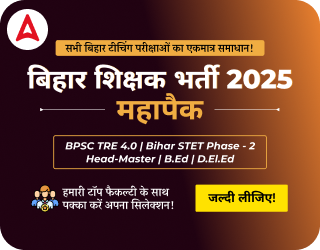Table of Contents
Micro Teaching is a skill which train teacher to teach with feedback and reviews from faculty. Micro Teaching is a way to build teacher his skill which can help them in teaching process. Here we are going to learn about Micro Teaching : Teaching Skills, Characteristics, Cycle, advantages and Limitations.
Micro Teaching
Micro-teaching is used for developing certain teaching skills. A teachers skill is defined as a set of teacher’s behaviours which are especially effective in bringing about desired changes in pupil teachers. There are various teaching skills which are developed by microteaching technique used in teacher training institutes. (Professor Allen 1963 developed this technique.)
Characteristics of Micro Teaching
- This technique is applied to develop teaching skills in pupil teacher in teacher training institutes.
- This is an individual training method.
- Teaching is done for 5-10 minutes.
- 5-10 pupil teachers play the role of students.
- One teaching skill is developed at one time.
- Feedback is provided immediately.
- Micro teaching labs are established in – teacher training institutes.
- Video recording of lesson being taught is done for auto feedback.
Steps of Micro Teaching
The Micro-teaching programme involves the following steps:

- Step I- Particular skill to be practiced is explained to the teacher trainees in terms of the purpose and components of the skill with suitable examples.
- Step II- The teacher trainer gives the demonstration of the skill in Micro-teaching in simulated conditions to the teacher trainees.
- Step III- The teacher trainee plans a short lesson plan on the basis of the demonstrated skill for his/her practice.
- Step IV- The teacher trainee teacher the lesson to a small group of pupils. His lesson is supervised by the supervisor and peers. –
- Step V- On the basis of the observation of a lesson, the supervisor gives feedback to the teacher trainee. The supervisor reinforces the instances of effective use of the skill and draws attention of the teacher trainee to the points where he could not do well.
- Step VI- In the light of the feed-back given by the supervisor, the teacher trainee replans the lesson plan in order to use the skill in more effective manner in the second trial.
- Step VII- The revised lesson is taught to another comparable group of pupils.
- Step VIII- The supervisor observes the re-teach lesson and gives re-feed back to the teacher trainee with convincing arguments and reasons.
- Step IX- The ‘teach–re-teach’ cycle may be repeated several times till adequate mastery level is achieved.
Micro Teaching Cycle
As per NCERT there are six steps of micro teaching and the duration of micro teaching cycle is 36 minutes.
- Preparing Micro lesson Plan.
- Teaching Micro lesson
- Feedback
- Re-preparing Micro-lesson Plan
- Reteaching Micro lesson
- Re-feedback
Advantages
- This is an individual training method and all teaching skills are developed in all pupil teachers
- No separate class is required for it in school as it is performed in teacher training institute
- Complete teaching skills are developed in pupil teachers.
- Immediate feedback is provided.
- Pupil teacher can find out his own deficiencies with the help of audio-video recording.
- Audio-video recording become helpful in research works regarding class teaching.
- Pupil teacher feels relaxed as the teaching is performed for only 5-10 minutes.
- No disciplinary problem is faced.
Limitation
- Micro-teaching is a training technique, not a teaching technique. It mainly focuses on the training of particular skill.
- It has limitation with learning process through micro-teaching practice.
- Micro-teaching does not focus on content and syllabus of subject.
- Micro-teaching is time consuming technique which requires much time to give equal opportunities to all trainees for their skill development.
- Micro-teaching is very expensive technique of teaching.
- There is no similarity between micro-teaching and real classroom teaching. It deviates from normal classroom teaching in terms of time duration, number of students and content.
Differences in Micro & Macro Teaching
| Micro Teaching | Macro Teaching |
| Micro teaching occurs when a teacher works with a small group of students for a short period of time. | Macro teaching occurs when a teacher provides instruction to the entire class at one time for an extended period of time, usually longer than 10 minutes |
| The Word “Micro” originates from the Greek word “mikros” meaning small and short | The Word “Macro” originates from the Greek word “makros” meaning long and large. |
| Micro lesson planning happens when a teacher creates individual classroom activities that occur on a day-to-day basis. | Macro lesson planning involves mapping out the material which will be taught over the span of the school year |
| It incorporates a specific topic that needs to be taught for a particular period. | It incorporates all the various topics that to be taught in a subject. |
| Micro teaching relies on kinetic learning, with students learning from “hands-on” experience, | Macro teaching relies on auditory learning and recall |
Download Micro Teaching: Teaching Skills, Characteristics, Cycle PDF
Check: MAHA TAIT Result 2025



 HTET Question Paper 2025 Out By Adda247,...
HTET Question Paper 2025 Out By Adda247,...
 HTET Answer Key 2025 Out, Download Level...
HTET Answer Key 2025 Out, Download Level...
 Chandigarh JBT Teacher Recruitment 2025 ...
Chandigarh JBT Teacher Recruitment 2025 ...





